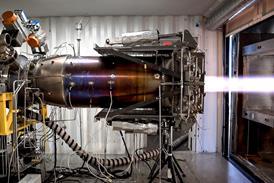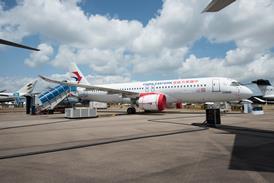For centuries, metal working has involved cutting blocks of metal to a desired shape, with the material locked into place with tooling to ensure it cannot move during processing. But tooling is time-consuming and expensive to produce and material waste can be high, so rather than cutting away, how about building up?
Three-dimensional welding may be an answer. So-called shaped metal deposition could prove to be ideal for aerospace prototypes, specialist components with very small batch sizes and, particularly, hollow parts such as cylinders, which are normally machined from solid blocks at a high cost in waste material.
Eliminating tooling promises to save lead time, allow designs to be evolved more rapidly and each evolution to be tested more quickly. The lack of any tooling can also reduce stock, in terms of the production equipment that has to be held and the storage space it takes up.
 |
|---|
THREE-YEAR PROJECT
Under a European Union project, work over the past three years (see box) has been to understand shaped metal deposition fully with a focus on titanium. Other alloys under consideration are nickel and steel. In theory different metals could form layers in an object to obtain specific properties.
Basic geometries have been produced that would suit standard parts' features. Hollow or small batch size parts are not expected to be used for critical system components. Engine cases are a near-term application, but the objective would not be to produce the entire part but to add bosses to a forged case.
Shaping up for production Shaped metal deposition is described as an additive manufacturing process that can be used for prototype production and manufacturing directly from a CAD model with minimum post-production machining operations. The process's equipment consists of a robot arm with a tungsten inert gas welding head and a manipulator that is fed with metal wire. Components are built layer by layer without tooling. This is all housed inside a sealed chamber with an inert argon atmosphere to prevent the substrate, electrode and part reacting with normal atmospheric gases. A water-cooled vision system allows the process to be monitored in real time. The European Union's sixth framework programme's 36-month €2.85 million ($3.85 million) project Rapid Production of Large Aerospace Components (Rapolac) has been working to make shaped metal deposition a more commercially viable process The benefits of wide commercial use of metal deposition are expected to be a 60% reduction in the lead time for new parts, a 40% reduction in the cost of manufacturing products and a reduction of 90% in inventory. |
For now the rate at which material can be laid down is from 0.8m to 2.8m per minute while the wall thickness of any part can be from 5mm (0.2in) to 20mm. Work to date has determined that slower rates with low heat input produces good mechanical properties.
Heat treatment, a process used to strengthen a material or harden its surface, has been found not to improve the properties of shaped metal deposition parts but to make them brittle.
One other drawback to shaped metal deposition is the fact that a part is essentially welded to the surface on which it is laid down. The solution is to make the part a little taller than planned and then cut it off, says Rosemary Gault, the University of Sheffield research project manager and project co-ordinator. This cutting, achieved with a buzzsaw in the experimental robot cell, could use water jets in future.
Flight International has been told that unnamed "major aerospace companies" have had test parts produced that are under evaluation. Information about the project's progress has also been requested by forging companies and medical device specialists. The project's industrial members include Belgian, Italian and UK academic institutions.
FACTORY OF THE FUTURE
The project's aims are to demonstrate a 60% reduction in lead times, a 40% drop in the cost of manufacturing through raw material savings and a 90% cut in inventory with an end to tooling. The project was to have finished in December 2009, but the team asked for a six-month extension.
Based at the Advanced Manufacturing Research Centre the entire facility has been relocated to a "factory of the future" building. As such the centre's research robot cell is still under development, depositions on forgings are ongoing and final microstructure reports for the parts produced are yet to be completed.
The process needs to be qualified for aerospace. But the dream of every repair, maintenance and overhaul of having a box in the corner that can produce any component is a little closer.
Source: Flight International




















